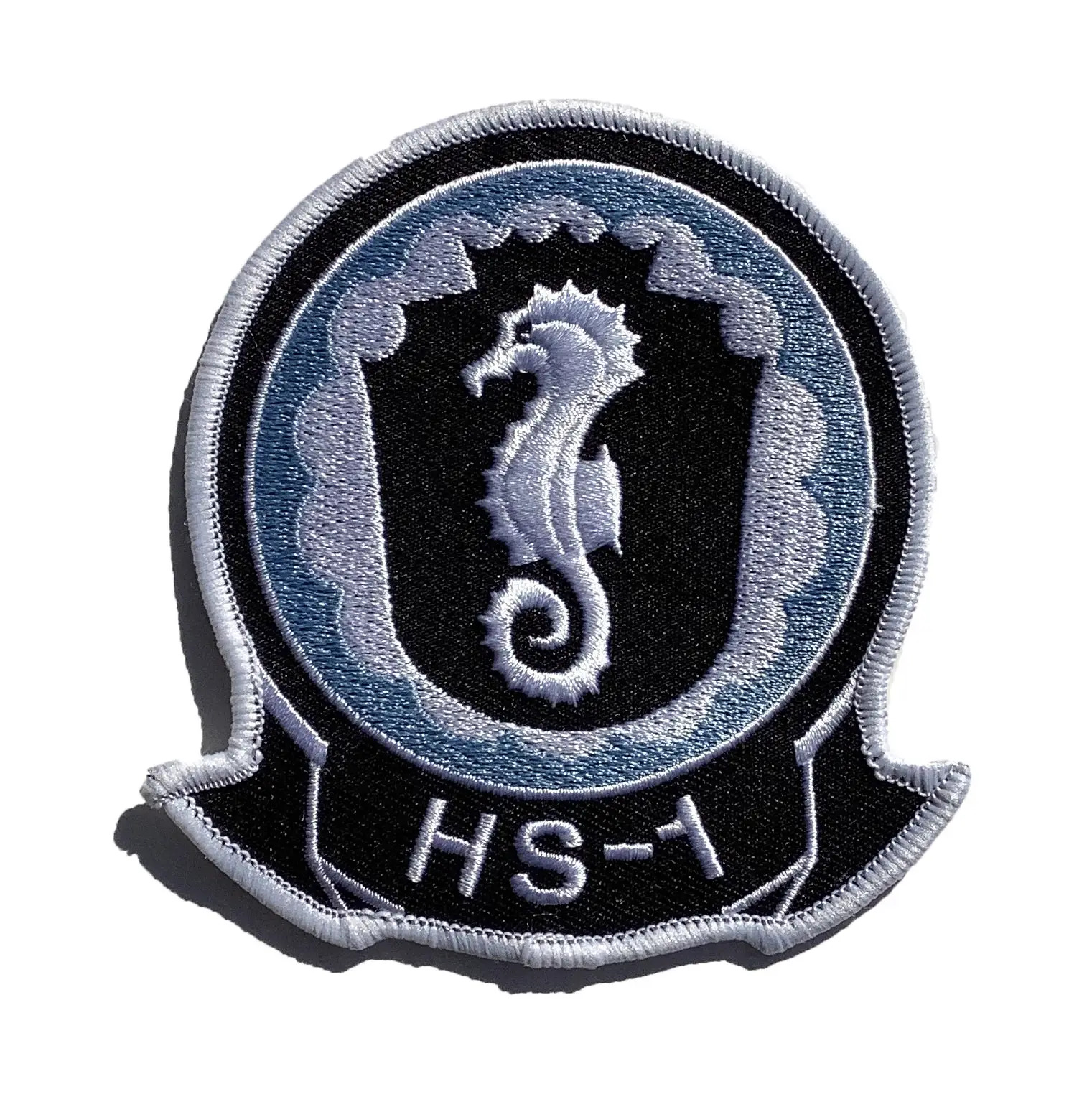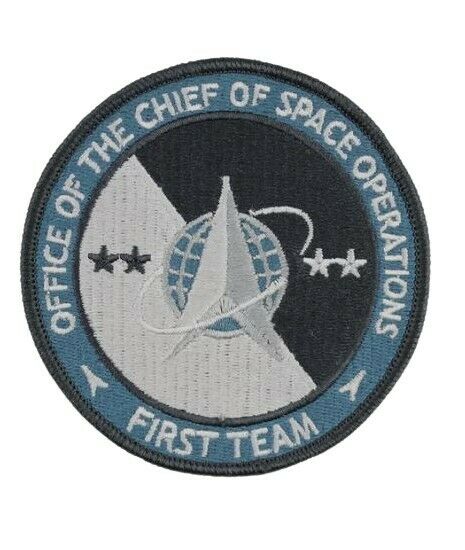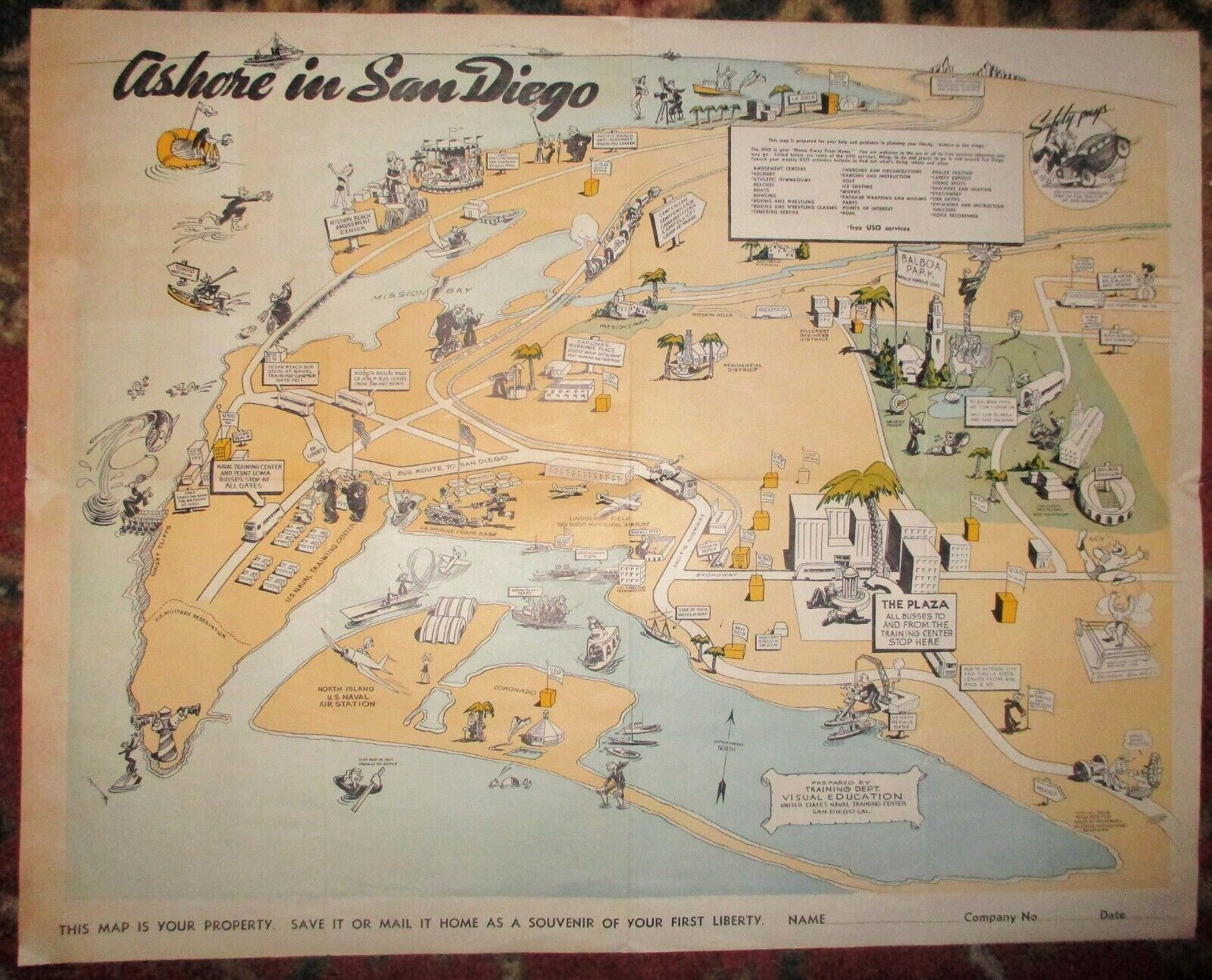-40%
HS-1 Seahorses Squadron Patch – Sew On
$ 5.8
- Description
- Size Guide
Description
HS-1 Seahorses Squadron Patch – Sew OnHS-1 Seahorses Squadron Patch – Sew On A 4 inches HS-1 Seahorses Squadron Patch. As its designation implied, HS-1 was the Navy’s first antisubmarine helicopter squadron, and served as an operational fleet squadron from its establishment on 3 October 1951 in NAS Key West, Fla., until 1960, when the Seahorses assumed the role of fleet replacement training for East Coast HS squadrons. As a pioneering squadron, HS-1 played a significant role in developing the antisubmarine warfare (ASW) capability of the naval helicopter. The squadron initially was equipped with HUP-1/2 Retrievers, first delivered in February 1952, and soon briefly acquired an HTL Sioux and a TBM Avenger for training use. By 1953, the HRS-2/3 and HO4S-3 were also in the squadron’s inventory. An SNB trainer was used for liaison purposes from 1955 until 1960. The HSS-1 (SH-34G) Seabat arrived in October 1955, replacing the HUP and the HO4S-3 in 1956. The night-capable HSS-1N (SH-34J) was acquired in August 1958. HS-1 began deploying ASW detachments on board the escort carriers Gilbert Islands (CVE 107) and, in the Mediterranean, Siboney (CVE 112) in 1953. During the remainder of the 1950s, HS-1 detachments also deployed on board Valley Forge (CVS 45), Antietam (CVS 36), Leyte (CVS 32), Tarawa (CVS 40), Wasp (CVS 18), Kula Gulf (CVE 108) and Mindoro (CVE 120). In 1959, by which time other HS squadrons had been established, HS-1 deployed as a full squadron to the Mediterranean on board Lake Champlain (CVS 39). On 30 September 1960, HS-1 was absorbed as part of Replacement Antisubmarine Carrier Air Group 60 and assigned the role of replacement training, its primary mission for the next 37 years. In June 1961, the squadron received its first turbine-powered helicopter, the HSS-2 (SH-3A) Sea King. The last SH-34Js were transferred by July 1963. HS-1 also took on the role of training foreign pilots, crewmen and maintenance personnel, eventually training personnel from Canada, Spain, Italy, Brazil, Denmark, Iran, Argentina, Kuwait and the United Kingdom. HS-1 also trained the Marine Corps and Army crews that flew the presidentialVH-3 fleet. The Seahorses added the SH-3D to their fleet in October 1966, as well as the SH-3G utility version by 1970 and the SH-3H in September 1973. The squadron moved to NAS Quonset Point, R.I., in July 1970, and then to NAS Jacksonville, Fla., in December 1973. A VH-3A was assigned to the squadron in 1974 for maintenance training for the presidential helicopter fleet. HS-1 resumed an operational role in October 1977 when Helicopter Combat Support Squadron (HC) 2 was disestablished. HS-1 took over two SH-3G detachments overseas: Det 1, which supported Commander Middle East Force, and Det 3, which supported Commander Sixth Fleet. The squadron also provided torpedo recovery services in the Bahamas and plane guard and logistics for carrier workups and North Atlantic deployments. By 1987, HS-1 had acquired an HH-3A combat rescue version, and in 1989 added combat search and rescue training, including nightvision device training, to its responsibilities. In 1991, HS-1 became responsible for standardizing search and rescue training Navywide; this role came to include rescue swimmer and helicopter rappel training schools. By this time, the Seahorses were flying the SH-3H and SH-3G exclusively. In January1993, the SH-60F Seahawk began to replace the SH-3H in HS-1; the same year, the UH-3H utility version was acquired to train crews in that model. In October 1996, when a second HC-2 was established, the overseas detachments and the H-3 replacement training role were transferred to the new squadron. HS-1 continued as the East Coast SH-60
HS-1 Seahorses Squadron Patch – Sew On
HS-1 Seahorses Squadron Patch – Sew On
A 4 inches HS-1 Seahorses Squadron Patch.
As its designation implied, HS-1 was the Navy’s first antisubmarine helicopter squadron, and served as an operational fleet squadron from its establishment on 3 October 1951 in NAS Key West, Fla., until 1960, when the Seahorses assumed the role of fleet replacement training for East Coast HS squadrons. As a pioneering squadron, HS-1 played a significant role in developing the antisubmarine warfare (ASW) capability of the naval helicopter. The squadron initially was equipped with HUP-1/2 Retrievers, first delivered in February 1952, and soon briefly acquired an HTL Sioux and a TBM Avenger for training use. By 1953, the HRS-2/3 and HO4S-3 were also in the squadron’s inventory. An SNB trainer was uséd for liaison purposes from 1955 until 1960. The HSS-1 (SH-34G) Seabat arrived in October 1955, replacing the HUP and the HO4S-3 in 1956. The night-capable HSS-1N (SH-34J) was acquired in August 1958. HS-1 began deploying ASW detachments on board the escort carriers Gilbert Islands (CVE 107) and, in the Mediterranean, Siboney (CVE 112) in 1953. During the remainder of the 1950s, HS-1 detachments also deployed on board Valley Forge (CVS 45), Antietam (CVS 36), Leyte (CVS 32), Tarawa (CVS 40), Wasp (CVS 18), Kula Gulf (CVE 108) and Mindoro (CVE 120). In 1959, by which time other HS squadrons had been established, HS-1 deployed as a full squadron to the Mediterranean on board Lake Champlain (CVS 39). On 30 September 1960, HS-1 was absorbed as part of Replacement Antisubmarine Carrier Air Group 60 and assigned the role of replacement training, its primary mission for the next 37 years. In June 1961, the squadron received its first turbine-powered helicopter, the HSS-2 (SH-3A) Sea
King. The last SH-34Js were transferred by July 1963. HS-1 also took on the role of training foreign pilots, crewmen and maintenance personnel, eventually training personnel from Canada, Spain, Italy, Brazil, Denmark, Iran, Argentina, Kuwait and the United Kingdom. HS-1 also trained the Marine Corps and Army crews that flew the presidentialVH-3 fleet. The Seahorses added the SH-3D to their fleet in October 1966, as well as the SH-3G utility version by 1970 and the SH-3H in September 1973. The squadron moved to NAS Quonset Point, R.I., in July 1970, and then to NAS Jacksonville, Fla., in December 1973. A VH-3A was assigned to the squadron in 1974 for maintenance training for the presidential
helicopter fleet. HS-1 resumed an operational role in October 1977 when Helicopter Combat Support Squadron (HC) 2 was disestablished. HS-1 took over two SH-3G detachments overseas: Det 1, which supported Commander Middle East Force, and Det 3, which supported Commander Sixth Fleet. The squadron also provided torpedo recovery services in the Bahamas and plane guard and logistics for carrier workups and North Atlantic deployments. By 1987, HS-1 had acquired an HH-3A combat rescue version, and in 1989 added combat search and rescue training, including nightvision device training, to its responsibilities. In 1991, HS-1 became responsible for standardizing search and rescue training Navywide; this role came to include rescue swimmer and helicopter rappel training schools. By this time, the Seahorses were flying the SH-3H and SH-3G
exclusively. In January1993, the SH-60F Seahawk began to replace the SH-3H in HS-1; the same year, the UH-3H utility version was acquired to train crews in that model. In
October 1996, when a second HC-2 was established, the overseas detachments and the H-3 replacement training role were transferred to the new squadron. HS-1 continued
as the East Coast SH-60
×
Buy now and save!
Tell a friend
Visit store
Watch now
Postage info
Click the Postage tab above the listing description for more info
FREE Postage
Click the Postage tab above the listing description for more info!
Additional delivery notes
PICK UP OPTION
Sorry, our items are NOT available for pick-up.
PAYING VIA PAYPAL
We accept PayPal on our all our items so you can shop with confidence.
Simple choose the PayPal option when proceeding through the checkout.
Additional Information
No additional information at this time
Ask seller a question
You might also like
VP-10 Red Lancers Plaque
HT-28 Hellions Plaque
Contact
To contact our Customer Service Team, simply click the button here and our Customer Service team will be happy to assist.
Ask seller a question
© Squadron Nostalgia LLC
Postage
Shipping is FREE for this item
Payment
Accepted Payment Methods
PayPal
Returns
Returns are accepted
Items must be returned within 30 days of the auction ending
Seller will pay for return shipping.
eBay integration
by









